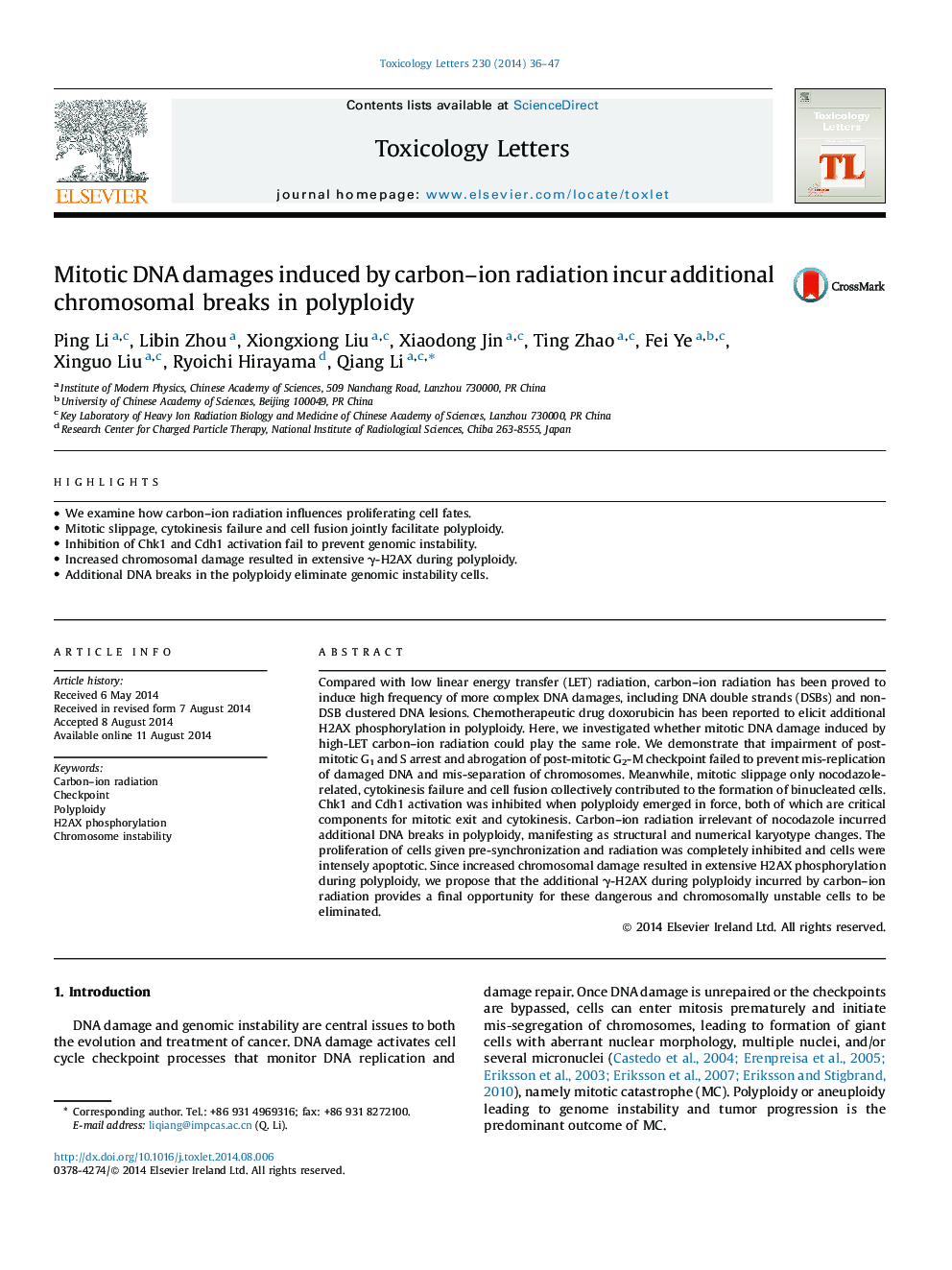| کد مقاله | کد نشریه | سال انتشار | مقاله انگلیسی | نسخه تمام متن |
|---|---|---|---|---|
| 2598925 | 1133170 | 2014 | 12 صفحه PDF | دانلود رایگان |

• We examine how carbon–ion radiation influences proliferating cell fates.
• Mitotic slippage, cytokinesis failure and cell fusion jointly facilitate polyploidy.
• Inhibition of Chk1 and Cdh1 activation fail to prevent genomic instability.
• Increased chromosomal damage resulted in extensive γ-H2AX during polyploidy.
• Additional DNA breaks in the polyploidy eliminate genomic instability cells.
Compared with low linear energy transfer (LET) radiation, carbon–ion radiation has been proved to induce high frequency of more complex DNA damages, including DNA double strands (DSBs) and non-DSB clustered DNA lesions. Chemotherapeutic drug doxorubicin has been reported to elicit additional H2AX phosphorylation in polyploidy. Here, we investigated whether mitotic DNA damage induced by high-LET carbon–ion radiation could play the same role. We demonstrate that impairment of post-mitotic G1 and S arrest and abrogation of post-mitotic G2-M checkpoint failed to prevent mis-replication of damaged DNA and mis-separation of chromosomes. Meanwhile, mitotic slippage only nocodazole-related, cytokinesis failure and cell fusion collectively contributed to the formation of binucleated cells. Chk1 and Cdh1 activation was inhibited when polyploidy emerged in force, both of which are critical components for mitotic exit and cytokinesis. Carbon–ion radiation irrelevant of nocodazole incurred additional DNA breaks in polyploidy, manifesting as structural and numerical karyotype changes. The proliferation of cells given pre-synchronization and radiation was completely inhibited and cells were intensely apoptotic. Since increased chromosomal damage resulted in extensive H2AX phosphorylation during polyploidy, we propose that the additional γ-H2AX during polyploidy incurred by carbon–ion radiation provides a final opportunity for these dangerous and chromosomally unstable cells to be eliminated.
Journal: Toxicology Letters - Volume 230, Issue 1, 1 October 2014, Pages 36–47